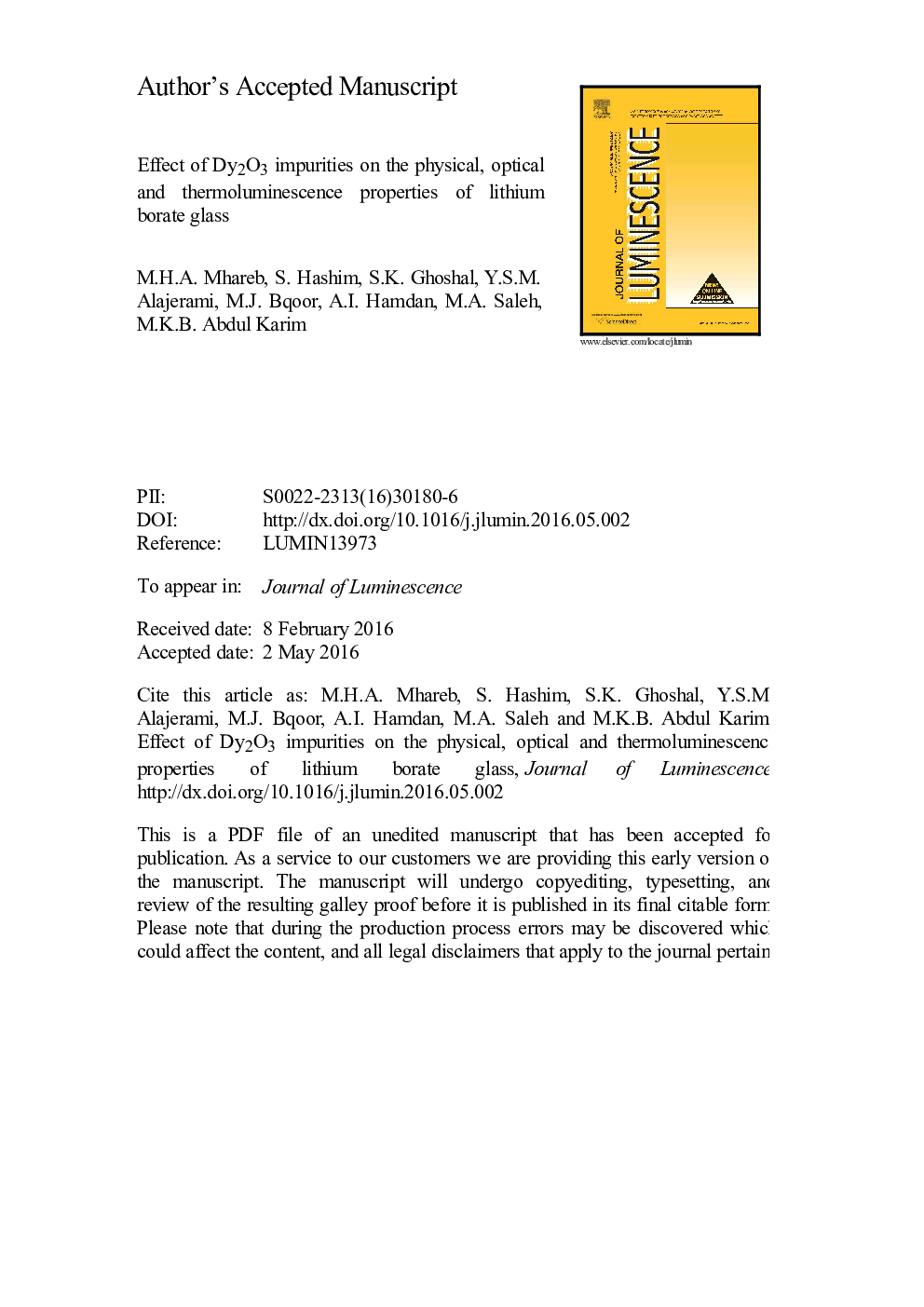| Article ID | Journal | Published Year | Pages | File Type |
|---|---|---|---|---|
| 5398599 | Journal of Luminescence | 2016 | 23 Pages |
Abstract
Dysprosium (Dy) doped lithium borate glass (LBG) is prepared using conventional melting-quenching technique with varying Dy concentration in the range of 0 to 1.0 mol%. Prepared glass samples are characterized via X-Ray Diffraction (XRD), Fourier Transform Infrared (FTIR), UV-vis-IR, Photoluminescence (PL), Thermoluminescence (TL) spectroscopy and Differential Thermal Analysis (DTA). The physical parameters such as the density, optical energy band gap, oscillator strength, refractive index, ion concentration, Polaron radius, molar volume and inter-nuclear distance are determined. UV-vis-IR spectra revealed seven prominent bands centered at 448, 749, 796, 899, 1085, 1265 and 1679 nm corresponding to the transition from the Dy3+ ion׳s ground state (6H15/2) to the excited states (4I15/2,6F3/2, 6F5/2, 6H5/2, 6F9/2, 6H9/2 and 6H11/2). The room temperature photoluminescence (PL) spectra of the glass series at 350 nm excitation displayed two peaks centered at 481 nm and 573 nm, which are assigned to the transitions of (4F9/2â6H15/2) and (4F9/2â6H13/2), respectively. The TL spectra of gamma-irradiated samples are measured, which showed Dy3+ content dependent simple glow peak at 190 °C. Dysprosium ion is found to play an important role in the TL and PL intensity enhancement of LB phosphor.
Related Topics
Physical Sciences and Engineering
Chemistry
Physical and Theoretical Chemistry
Authors
M.H.A. Mhareb, S. Hashim, S.K. Ghoshal, Y.S.M. Alajerami, M.J. Bqoor, A.I. Hamdan, M.A. Saleh, M.K.B. Abdul Karim,
